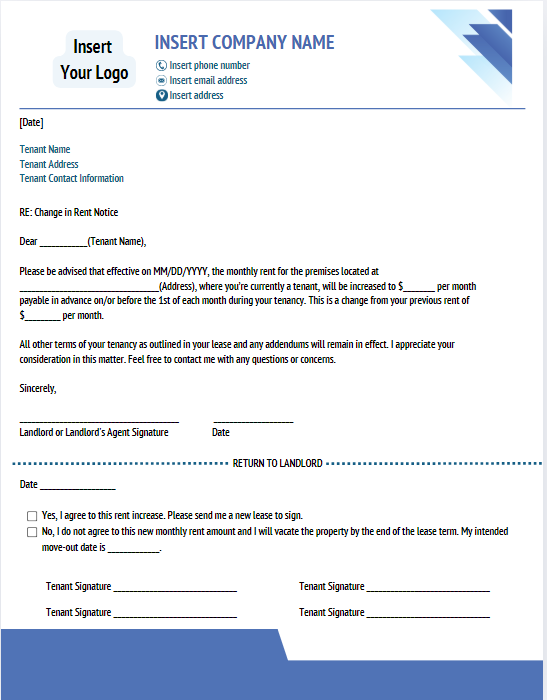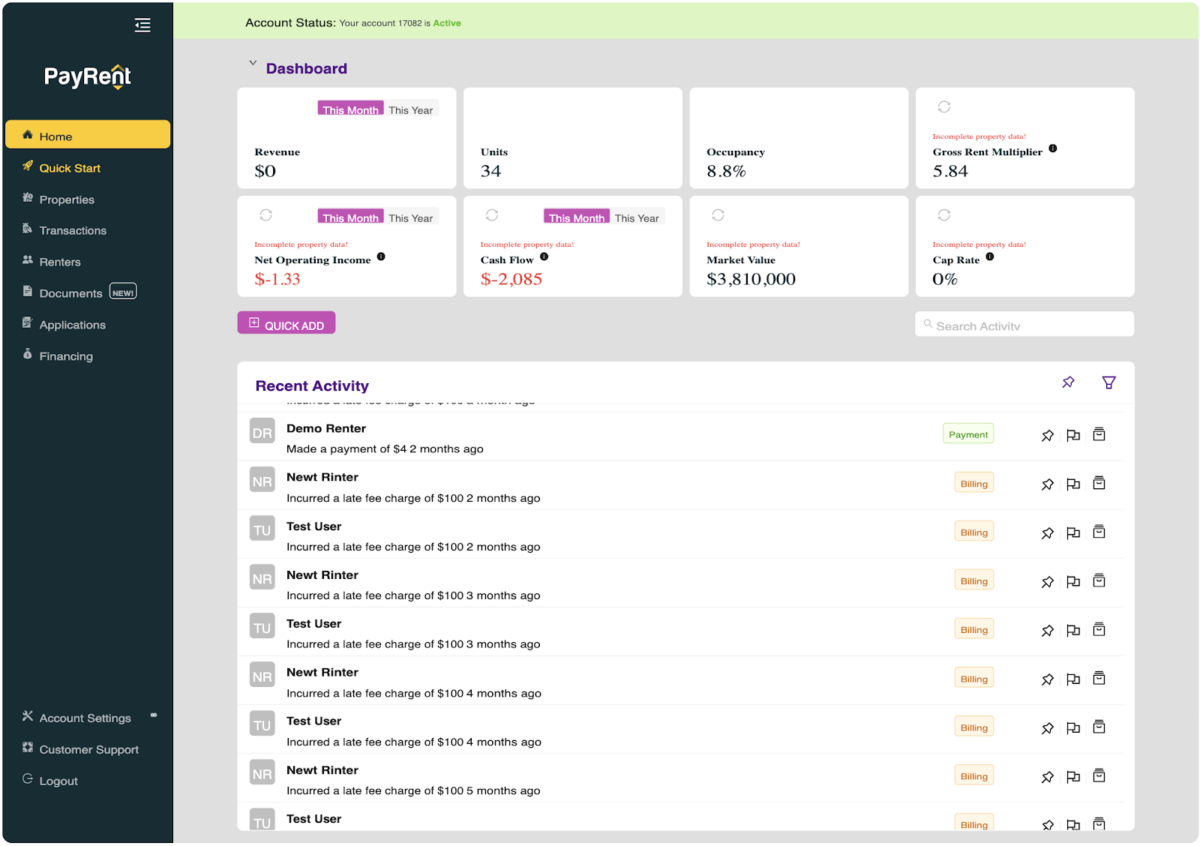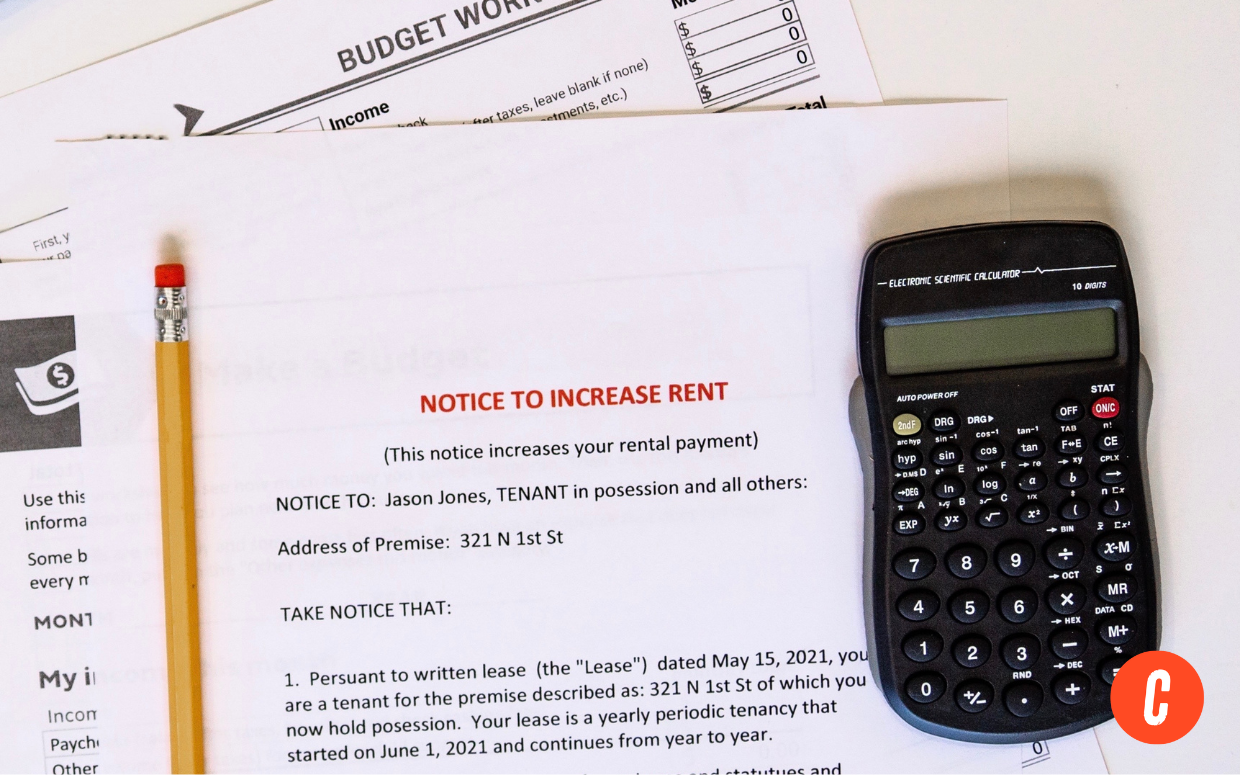Raising the rent on your properties is necessary from time to time, but letting your tenants know can be difficult. A friendly and professional rent increase letter template will make it easier. The letter should cover all the important details like your contact info, the new rent amounts, and how tenants can confirm they accept the new terms. It’s also crucial to stick to your state’s laws about this. To help you learn how to write a rent increase letter, I’ve put together a handy letter template to download for free and tweak to fit your needs.
⭐Bonus: Download Our FREE Rent Increase Letter Template ⭐

Reasons to Send a Rent Increase Letter
Owning property means you have to be able to assess your investment and make adjustments as needed. Rent increases occur for many reasons, including market fluctuations, rises in costs, and to create property appreciation. Landlords often send out rent increase letters to tenants for these common reasons:
-
Cover carrying costs or increase cash flow: If your expenses have risen significantly, raising rent is necessary to maintain positive cash flow.
-
Generate higher return on investment (ROI): After doing a rental market analysis (RMA), new rental property owners might find they’ve set their rent lower than others in the area. If they bump up the rent to match the market rates, it could really improve their property’s ROI.
-
Negotiate lease renewal:: During rental seasons, when demand is low, landlords can offer tenants a deal with a minimal increase in rent. This strategy can effectively encourage tenants to stay longer, which helps landlords maintain a steady cash flow and reduces the risk of extended vacancies once the lease expires.
-
Retain great tenants: Offer smaller rent increases to encourage good tenants to stay, enhancing your property’s long-term success.
-
Dissuade lease renewal: If you don’t want the tenant to renew the lease, consider raising the rent to a higher price.
-
Tenant inheritance: When purchasing a property with existing tenants, a rent increase may be necessary to align with your financial goals.
Pro Tip: Raising the rent can be a useful strategy to prompt undesirable tenants to vacate, but the most effective approach is to prevent bad tenants by conducting thorough initial applicant screening. Utilize tools for comprehensive tenant screening, including credit, criminal, and eviction checks, to ensure you choose the right tenants from the start.
Items to Include in Your Letter to Raise Rent
A letter notifying a tenant of a rent increase should include clear and easy-to-understand information while complying with all legal requirements. Although the specific dates for sending these letters will vary based on the terms of the rental agreement, each letter should include the same essential components.
Your Contact Information
When you’re putting together your rent increase notice, start by adding your name if you’re the landlord or the name of the property management company. This keeps things professional and helps the tenant quickly see who the letter is from, making it more engaging than a plain old page or envelope. Also, be sure to include the following information so that the tenant can easily contact you if needed:
Date the Letter Is Written
When you’re raising the rent for your tenants, it’s essential to give them plenty of notice. This keeps a positive relationship between you and your tenants and is also required by law in many states. For example, in New York, if someone’s on a yearly lease, you must give them a 60-day notice. On the other hand, Idaho only requires a 30-day notice. Including the date in your message shows that you’re following the rules and trying to make things as easy as possible for everyone.
Greeting
This small but significant detail can greatly influence how a tenant perceives and responds to your rent increase letter. Some landlords opt for a generic greeting, such as “Dear Tenant,” but I recommend using the tenant’s first name instead. Addressing them by name feels more personal and encourages open communication, while a generic greeting can come across as robotic and impersonal.
Consider adding a subject line right above the greeting. While this isn’t necessary, it’s another strategy to get the tenant’s attention and communicate the importance of the notice. Here are a few examples:
Body of the Letter
If you’re wondering how to explain a rent increase to a tenant, the body of the letter is the place to do it. This is where you also have the most room for flexibility in your tone. Opt for being strictly professional or adopting a more informal style, depending on your preferences and relationship with the tenants. Whether you write a few paragraphs or keep your message concise, there are some essential details that you should include, such as:
Pro Tip: Adding a phrase or paragraph expressing gratitude for the tenant’s cooperation and offering a point of contact for inquiries also shows your desire to support them through what could be a difficult change.
Closing Remarks
When learning how to write a letter to raise rent, it’s important to consider how you will close out the message. Use the same tone you’ve maintained throughout, keeping it professional and positive. The closing remarks should be simple, using phrases like “Sincerely,” “Thank you,” or “All the best.” Below that closing line, add your name, a space for your signature, and your title to keep it a proper letter.
Tenant Acknowledgement
Last but certainly not least, you should always get tenant acknowledgment for the information you share about their lease terms. This is necessary to finalize your agreement and keep it for your records. At the bottom of your rent letter, include a spot for signatures for yourself if you’re the landlord and for the tenant. Don’t forget to leave a spot for the date of signing. Using real estate software for investors is a great way to keep track of documents and communicate with your tenants.

Using a platform like PayRent will help you manage tenant communications and streamline your revenue. Take advantage of many tools and features to simplify your business, such as screening tenants, accepting online applications, collecting rent, managing documents, and collecting e-signatures.
Important Note: If your tenant does not agree to the new terms of their lease, you will need to inform them of their options, which would include moving out at the end of their lease.
When & How to Send a Letter to Increase Rent
Since most leases don’t automatically renew, you and your tenants need to sign a new lease with updated terms and pricing before the original one expires. Check your state’s regulations on how to let tenants know about rent changes so that you give the required amount of notice. While raising rent usually happens when an annual lease ends or a property is being rented out, it may be necessary to send a letter at one of the following times:
- Prior to a lease renewal
- At the end of a month-to-month lease
- During the middle of a lease (only legal if there is a clause in the lease that allows it)
Since rent increases can be time-sensitive, the date and delivery time are crucial. These are the primary delivery methods:
- Certified mail: Provides a documented record of sending and receipt, which helps prevent disputes over notice or timing of notice. Include the date and send the notice well in advance so it arrives within the required period. For example, send it at least five days before a 60-day notice to avoid any timing issues.
- Email or e-signature software: Manually requesting a read receipt when sending via email will notify you that the tenant has received the documents. Even better, e-signature platforms timestamp the document every step of the way for more secure delivery.
- In-person delivery: Personal delivery lacks documentation, so consider asking for a signed acknowledgment of receipt from the tenant.
Legal Factors to Consider When Increasing Rent
Now that you know how to write a rent increase letter, be sure to learn the legal factors in your area. Landlord-tenant laws vary from state to state and come with specific requirements for both parties. If you’re a landlord, it’s important to stay informed and follow these laws, especially when it comes to raising rent and giving notice. Rent increases apply to both month-to-month rentals and longer leases, but notice requirements differ depending on the lease type.
Rent control regulations exist in some states to limit how much landlords can increase their rental prices. Take California, for instance—landlords can only raise the rent by 5% each year, plus another 5% for cost-of-living adjustments, which means the total max increase is 10%. But when it comes to setting the initial rent for new tenants, there aren’t any rules. So, as a landlord, you need to figure out the right rent to charge from the beginning of your investment journey.
Frequently Asked Questions (FAQs)
Can you negotiate a rent increase with a tenant?
Yes, negotiating a rent increase with a tenant is possible. Approach the negotiation with professionalism and transparency. Start by seeing things from the tenant’s side and understand why they might be hesitant about the increase. Then, explain your reasons for the increase, like any extra costs you’re dealing with as a landlord. From there, try to collaborate on a solution that works for everyone. And don’t forget to document any changes to the rental agreement in writing and follow all the state regulations about rent increases.
What is the most a landlord can raise rent?
There isn’t a federal law that sets a limit on how much rent can be raised, but some states and cities do have their own rules about it. In certain areas, landlords have to give notice in a specific amount of time before raising the rent, and others have rent control that limits how much the rent can go up each year. It’s important for landlords to do their research and understand the laws in their particular area to avoid any legal trouble.
If my tenant moves out rather than accept a rent increase, what do I do next?
When a tenant decides to move out because of a rent increase, it’s important to act quickly and systematically. First, get their decision in writing and send out any necessary notices, such as a notice to vacate. Process and return their security deposit, remembering to deduct any unpaid rent or valid property damages. To avoid prolonged vacancy, advertise the property right away and think about adjusting the rent based on what’s happening in the market. As you transition, have a new lease ready and be prepared with a solid screening process for new tenants. It’s also a good idea to chat with a local attorney or property manager to make sure you’re following all the local regulations.
Bringing It All Together
Investing in real estate comes with both challenges and exciting opportunities, especially when it comes to setting your own prices and controlling your income. By using the tips above and downloading our sample rent increase letter, you can send a rent increase notice that is simple and efficient. Are you a landlord? We’d love to hear about your tenant communication processes in the comments below.











Add comment